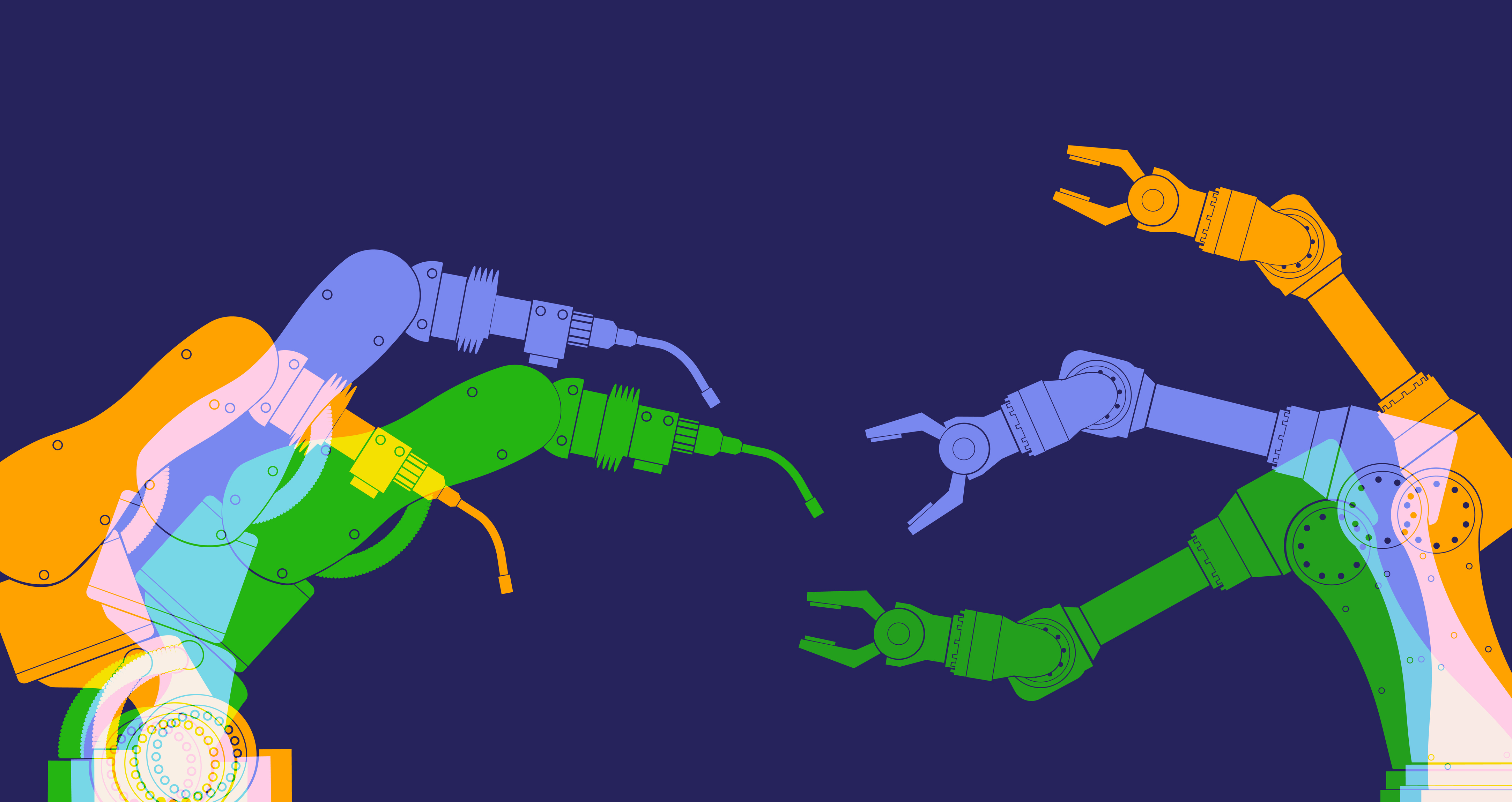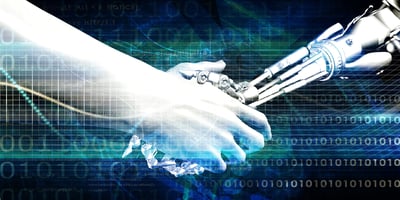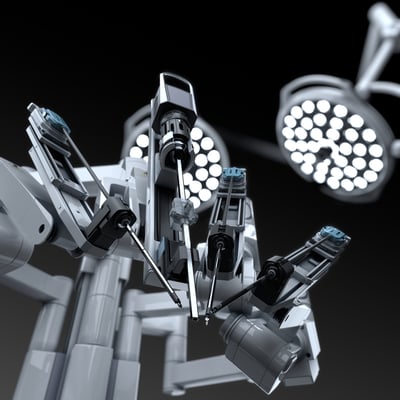
Robotics is one facet of artificial intelligence that everyone knows about to some degree – and even if they don’t, they think they do.
Let’s face it. Ever since you were a child, you’ve talked about robotic machines, done “the robot” dance, and played with toy robots. Robots are everywhere, but they always have been. They’re exciting, fun, and intriguing. There’s absolutely nothing to fear.
...right?
While everyone has an opinion on robots, there’s no consensus on how much automation is too much automation. We’re used to seeing robots on assembly lines (specifically helping to build cars) and other warehouse-type industries, but when we see robots in classrooms assisting students with learning disabilities, taking your order at your favorite restaurant, or helping employees to stock shelves in grocery stores, do we feel differently about robots than if they’re hidden away in a factory?
If robots are able to successfully work in situations that aren’t just monotonous, repetitive processes (i.e. on an assembly line), then people’s fears about the risks of artificial intelligence automation become validated.
These fears don’t necessarily stem from concerns about robots taking over; rather, people worry that robots will take on human levels of intelligence someday. For now, there are four types of artificial intelligence, and robots fall somewhere between types I and III, with II predominating.
Though robots are incapable of achieving true levels of human intelligence, AI is helping bring them closer than ever before. To fully understand the capacity AI robots have on industries today, let’s take a look at the existing types of intelligent robots as well as the industries currently utilizing them.
Though other types exist, the following types of intelligent robots are most prevalent.
Problem-solving: Problem-solving robots are those that learn how to solve a problem or series of similar or interrelated problems without deviating from their programmed responses.
Limited capacity learning: Robots with limited capacity AI capabilities are those which are trained to do one task or a series of related tasks without learning new methods from the repetitive processes. They know only what they are programmed to know and nothing more.
Social interaction: Robots that can interact at a social level are considered more intelligent than other bot types. If social interaction is a gauge of intelligence, then socially-adept bots have it in spades.
Although other industries outside of those listed below are also using AI-powered robots in their day-to-day processes, the following three are highlighted for their innovation the ease they bring to their respective fields.
It’s common knowledge that robots are increasingly used to assist surgeons with high-risk, high-difficulty procedures. But even before a surgeon or doctor can be cleared to practice, they need to go through extensive training and trial-and-error exercises (along with years of medical school, of course).
But rather than learning all materials from books or hands-on experience with real-life patients, robot are coming to the rescue to provide lifelike experiences without putting any human patients at risk. Gaumard is a healthcare education company that produces simulation robots for various exercises for medical students and medical professionals to practice on and learn from.
These lifelike robots speak to, interact with, and simulate facial and physical responses to the doctor or medical student when prompted, spoken to, or touched. In the video below, HAL is a child with whom pediatric students and medical professionals can practice communication, treatment, and patient interaction skills. On top of that, HAL works in conjunction with actual medical equipment that can monitor “his” breathing, heart rate, and so on.
Not only can medical professionals interact with HAL, but the robot can also be operated on as a tool to teach the proper way to complete a procedure and how to remedy any subsequent errors if the medical professional makes a mistake. Doctors and students can make incisions, conduct surgeries, take blood, monitor breathing, check vitals, and more. HAL is as close to a real-life test subject as it gets.
Some large industry leaders in the retail field have begun using robots to quickly tackle tasks once relegated to human customer associates. Walmart and Bossa Nova, a robotics company, have teamed up to create a supermarket experience like no other. In the past, customers would search for their groceries as a customer associate equipped with a clipboard and a checklist would walk up and down the aisles to take account of stock.
This meant a person would mark down items that were low in stock, out of stock, and overstocked. A task like this is time consuming for only one individual, so supermarkets often would employ multiple customer associates assigned to take stock of certain areas of the store. The more associates a store has, the more people on the payroll.
But those days are dwindling.
To save time and money, supermarkets and other retail marketplaces are using robots in place of human associates for the burdensome task of taking stock inventory.
The Bossa Nova robot scans shelves in real time to garner product data quicker than a human would be able to do. Even with customers and employees down the aisle, Bossa Nova can navigate and detect a product from a person, only scanning the store’s goods and taking account of what it sees. The purpose of such a robot is to improve product availability, enhance the customer experience, and lighten the load that customer associates have to contend with.
Industrial robots have been used in the manufacturing field since the inception of robots as a replacement for (or assistant to) human labor. For instance, we frequently see robots used in automobile manufacturing as many of the processes by which cars are made can be dangerous for humans to experience.
The first-ever industrial robot, Unimate, was used on an assembly line for General Motors in 1961. Unimate was a mechanical arm robot whose responsibilities included transporting die castings from the assembly line and welding car parts together. This is a case of dangerous tasks being handed off to robots to protect human safety.
|
Related: To learn about other milestones in AI innovation, check out our comprehensive guide on the history of artificial intelligence! |
In present day, robots in warehouses are used for much more than just assembly lines. As of 2014, Amazon has been using Kiva Robots, a robotics company acquired by the e-commerce giant, in their fulfillment centers’ warehouses. The Kiva bots help employees to fill orders in a fraction of the time that humans alone can manage (15 minutes vs. 90 minutes if done by a human).
Instead of having a human walk the entire warehouse searching for items, the Kiva robots can pick up and transport inventory pod shelving units directly to a human worker who then selects the correct item from the large pod of inventory. The Kiva bots can lift over 750+ pounds and are programmed with object detection technology that allows them to move freely throughout the warehouse, avoiding potential collisions with other Kiva bots or human workers.
The Kiva bots improve overall efficiency by saving time, allowing for more work to be done, and increasing output to fulfill customer order requests.
In a way, yes, robots are taking on some tasks that were once done by humans alone. But overall, no. See, robots cannot function without human programming, debugging, and analysis. So even though they are becoming increasingly prevalent in our day-to-day society, they aren’t going to completely take over our jobs, our lives, or the world.
Let’s face it – we’re already using artificial intelligence in other formats, so why should we worry if the next big thing are AI robots that help us live more efficient lives? In any case, robots will become an essential part of our daily lives in the same way computers have since the 1980s.
Want to learn more about robotics and the artificial intelligence software platforms used to power them? Read our artificial intelligence statistics roundup to learn more today!
Rebecca Reynoso is the former Sr. Editor and Guest Post Program Manager at G2. She holds two degrees in English, a BA from the University of Illinois-Chicago and an MA from DePaul University. Prior to working in tech, Rebecca taught English composition at a few colleges and universities in Chicago. Outside of G2, Rebecca freelance edits sales blogs and writes tech content. She has been editing professionally since 2013 and is a member of the American Copy Editors Society (ACES).
Have you ever wished you could be in two places at once?
 by Piper Thomson
by Piper Thomson
We all love the idea of robots. Just look at how many are featured in television, films,...
 by Holly Landis
by Holly Landis
The inherent creativity of the human spirit manages to find expression in invention as much as...
 by Piper Thomson
by Piper Thomson
Have you ever wished you could be in two places at once?
 by Piper Thomson
by Piper Thomson
We all love the idea of robots. Just look at how many are featured in television, films,...
 by Holly Landis
by Holly Landis


